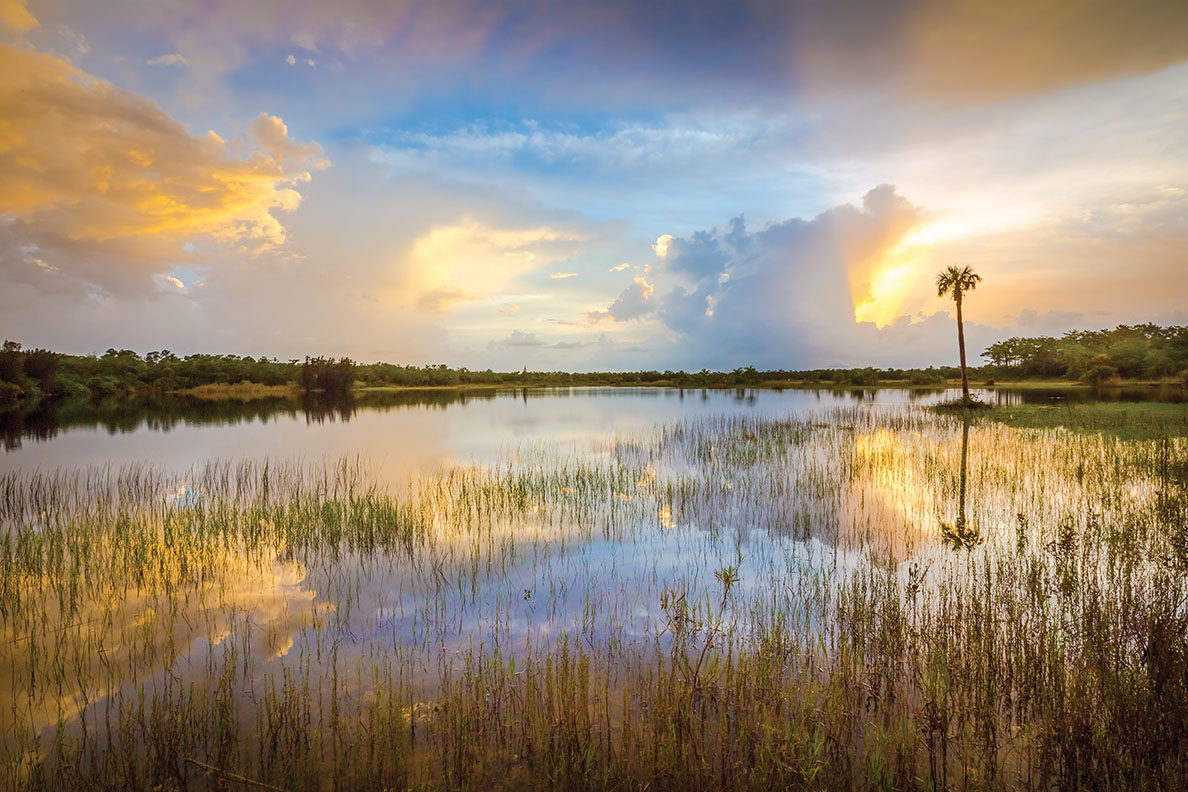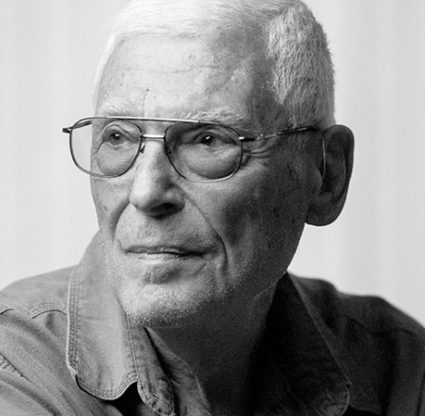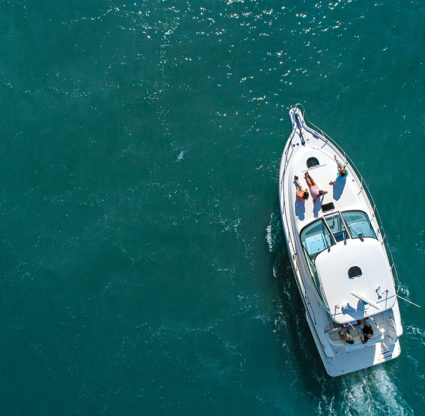"There’s a ruddy daggerwing!”
A bright orange butterfly flits across the dirt road at the Fakahatchee Strand Preserve State Park and disappears into dense vegetation. The biologist who spotted it is grinning like a kid who’d just seen his first big predator. It is a good thing the speedometer on his SUV barely registers because you can imagine him slamming on his brakes and chasing the insect into the woods.
Mike Owen does neither but instead eases to a stop, whips out his yellow 3-by-5 notebook, peers through the bottoms of his spectacles and records the find—date, time, location, species. He tracks nearly everything he sees, plant, animal and select insect, so he can detect changes over time. He wants to understand the impact man has had on the land—and to discern whether man’s efforts to undo past devastation are working.
“It’s my favorite butterfly,” Owen declares, pencil scratching. When folded, he explains, the ruddy daggerwing’s brown-tipped, jagged wings look like a dead leaf. Not only that, the butterfly acts like one, hanging upside down on a branch. Cloaked, like a Klingon warship. “That’s why I love it!”
 Owen (pictured), along with park services specialist Steve Houseknecht, ranger Steven Bass and park manager Renée Rau, is charged with managing, protecting and restoring the 80,000-acre Fakahatchee, a slice of the Big Cypress Swamp that comprises the western edge of the Everglades. If you were to divide up the land, each person would be responsible for some 20,000 acres (they are bringing on another ranger). The four of them live there, too, in single-family homes within the preserve. Houseknecht is raising a son there; Owen married his wife in the swamp two years ago. Rau officiated.
Owen (pictured), along with park services specialist Steve Houseknecht, ranger Steven Bass and park manager Renée Rau, is charged with managing, protecting and restoring the 80,000-acre Fakahatchee, a slice of the Big Cypress Swamp that comprises the western edge of the Everglades. If you were to divide up the land, each person would be responsible for some 20,000 acres (they are bringing on another ranger). The four of them live there, too, in single-family homes within the preserve. Houseknecht is raising a son there; Owen married his wife in the swamp two years ago. Rau officiated.
The vast majority of Collier County is wild land: the Fakahatchee, the Big Cypress National Preserve, Picayune Strand State Forest, the Florida Panther National Wildlife Refuge, Audubon Corkscrew Swamp Sanctuary, Collier-Seminole State Park, the Ten Thousand Islands National Wildlife Refuge, Everglades National Park. But most residents don’t know the history of these lands, how generations past butchered them and how generations current—like our Fakahatchee specialists—are trying to support the land’s healing through a trio of strategies: prescribed burning, hydrologic restoration and non-native plant removal.
Nor do most residents understand that the management decisions made in these remote places affect seasonal temperatures, the water and air quality in the population-dense areas along the shoreline, the health and abundance of marine life, and even the regional rainfall—essential to the agricultural lands in the east.
“We can do all these activities—we can manage, conserve, improve the land—but if the visiting public doesn’t know and understand what we’re doing and why it’s important to them, it’s almost rendered, by perception, useless,” Rau says. And that’s why these specialists took Gulfshore Life deep into the preserve earlier this summer to understand Fakahatchee’s past, present and tenuous outlook for its future.
*
Houseknecht spreads a poster-sized black-and-white aerial from the 1940s on a conference table. The vast dark swath cutting across the frame shows the Fakahatchee’s old-growth cypress trees.
Cypress is one of nature’s hardiest woods. “They call it the wood eternal,” Owen says. It was the timber of choice for the U.S. Navy during World War II and later a favorite among manufacturers—of pickle barrels, stadium seats, shingles and coffins. “We chose to liquidate old-growth cypress forests for pickle barrels, stadium seats, shingles and coffins,” Owen remarks, shaking his head. “But I guess we have to remember it’s easy for us to judge—we have food on our tables every day. It was a lot harder then.”
There were plenty of other assaults. Developers viewed the Everglades as wastelands and sought ways to drain and develop them—the most egregious example being the Golden Gate Estates project in what is today the Picayune Strand State Forest. The digging of canals there, in what was supposed to have become the world’s largest subdivision, caused water levels in the adjacent Fakahatchee to drop by a foot. In lands as sensitive as these, that’s a lot.
A Jetport would decide the region’s fate. The airport—to be the largest in the world—was slated for construction 48 miles east of Marco Island. Developers got as far as one runway before a coalition of conservationists, hunters, native tribes and residents persuaded the government to halt the project. The state and federal government have been working to regain land ever since; the Fakahatchee and Big Cypress were acquired in 1974. In 2000, Congress passed the $10 billion Comprehensive Everglades Restoration Plan—the largest hydrologic restoration ever undertaken in the United States.
The work of the Fakahatchee staff supports that plan.
*
Mike owen grabs a long, retractable measuring pole, tucks his notebook into his pocket and leads the way into the forest to show off its prizes—its famed orchids—and whatever else he might stumble upon. Joining him is his wife, Donna Glann-Smyth, whose ecological knowledge matches that of her husband. They met on one of Owen’s “Swamp Walks.” She was the first participant ever to identify one of Fakahatchee’s elusive ghost orchids before it bloomed. They married at the site of that orchid, though the plant itself was gone—a victim of poachers, those botanical villains for whom the park specialists are constantly on the lookout.
It’s easy to see why Owen fell in love with this place 22 years ago. The Fakahatchee, especially the dense cypress strand, holds a certain mystique. It is, as Owen will happily rattle off, the royal palm capital of the United States, the orchid capital of the United States, the bromeliad capital of the United States, the peperomia capital of the United States, the largest strand swamp in the world (though, admittedly, strand swamps don’t exist outside of Florida). Owen likes to call it Florida’s “Amazon,” and as soon as you cross into the strand, you feel as if you’ve been transported to the jungle. The treetop canopy deflects the sun. The air is dense and moist. Underneath, footsteps sink into spongy earth—5,000 years worth of deciduous trees dropping their leaves. Journalist Susan Orlean made the strand famous in her 1998 book The Orchid Thief.
With almost every step, Owen and Glann-Smyth point out something that an unschooled passer-by would not have noticed—a shell left over from a critter’s meal, the bud of a soon-to-open orchid, a bromeliad species found nowhere else in the United States, the stump of a cypress felled during the logging era.
“I call it a roller coaster orchid,” Mike Owen says, pointing to a stem winding around a thin branch. Its growth pattern reminds him of the Python ride at Busch Gardens. “Its real name is the ‘dingy star orchid,’” he continues. “I don’t like to call any of our orchids ‘dingy.’ It’s derogatory.”
His wife looks up and glimpses a white blossom suspended from a branch some 20 feet above. A ghost orchid.
“Isn’t that amazing!” her husband gasps. They don’t usually grow that high. He records the new flower’s location, not by GPS but by noting the distance from a landmark palm tree. That’s how well he knows these woods.
These observations serve important scientific purposes. What happens in the Fakahatchee can be a harbinger of things to come, a marker for how well the Everglades restoration is working, or an observatory to understand how nature works when left relatively unimpeded. His orchid data, for example, is arguably the most extensive in the United States, gleaned from 22 years of personal observations. “It’s a living laboratory,” Owen says.
His tracking of giant air plants kicked off a multi-organization race to save them. In December 2008, Owen and volunteers identified 850 of them in a census blitz. By December 2014, the count was down to 140. Owen is working with Naples Botanical Garden and Marie Selby Botanical Gardens in Sarasota to remove the remaining ones and protect them from the Mexican bromeliad weevils that are wiping them out. They intend to reintroduce them to the Fakahatchee when the time is right.
Recording animal sightings helps him and Houseknecht, the park’s fire specialist, measure the effectiveness of prescribed burns. Monitoring invasive plants determines the eradication projects that Bass manages.
Water data gathered monthly offers evidence of the hydrologic damage caused by drainage canals—and proof of the effectiveness of plugging efforts. The data had showed that Prairie Canal, at the boundary of Picayune and Fakahatchee, was pulling water from as far as 2 miles away. Today, after installing plugs, the water drops about 1 foot during the dry season and not at all during the wet. “We wouldn’t know that without these (monitoring) wells,” Owen says. The data encourages further efforts to restore the water flow to what nature had intended.
But sometimes Owen tracks data because it’s all he can do.
Back in the SUV, he notes the impending decline of the swamp redbay tree, under siege by laurel wilt, a fungus introduced to the area by a non-native beetle. The redbay is the host plant of the palamedes swallowtail butterfly.
“There’s nothing I can do to stop it,” Owen says. “We feel powerless, except to document. So I document.”
*
In everglades restoration, water gets the most attention. That’s no surprise; re-creating historic water flow is a feat of environmental engineering. But it’s a long and slow process, one largely out of the hands of the Fakahatchee staff.
They use another element—fire—to more directly reshape the land.
Steve Houseknecht climbs into a bright orange Kubota utility vehicle and steers it down James Scenic Drive, once a railroad bed and now the main “thoroughfare” through the Fakahatchee. He prefers days like this, outdoors, to filling out the copious paperwork involved in planning, reporting and documenting prescribed burns.
South Florida’s ecosystem loves fire—a good burn will replenish the soil; prompt new, nutrient-rich vegetation that nourishes wildlife; keep non-native plants at bay; and preserve boundaries between various ecosystems.
It’s too risky to let Mother Nature do her job alone these days—if she doesn’t light fires often enough, the fuel load will get too high, threaten nearby inhabitants and cost the state a bundle to put out. And you can’t tell nature to keep smoke off the roadways that now dissect the Everglades. So Houseknecht and his colleagues are trying to mimic nature, even as they try to control it.
Eight to 12 times a year, Houseknecht recruits firefighters from other state and federal parks and lights off anything from 500 acres to more than 1,000. Occasionally, if the budget allows, he can burn more.
The science behind prescribed burns will make your head spin—Houseknecht will rattle off dozens of factors that determine whether he can burn: prevailing winds, wind directions, weather patterns, the likelihood of smoke dispersing into the atmosphere. He’ll tell you how to “box in” fires using winds to steer the flames, how to secure a fire line, how often he’ll need to burn different habitats based on natural fire intervals.
Fakahatchee specialists have been burning since the mid-1980s; Houseknecht has been there 13 years, the second-longest-serving staffer behind Owen.
The efforts are paying off. The burns have reclaimed part of the prairie, an important habitat for some wildlife; they’ve opened up thick vegetation in other areas, allowing ease of movement for species such as deer and better visibility for smaller mammals such as fox squirrels on the lookout for predators; they’ve beat back some non-native plants; and they’ve helped bring back the deer population, which in turn helps the carnivorous panthers.
“My first 12 springs I was here, I saw no fawns,” Owen says. “Now I’ve been here 10 more springs, and I think I’ve seen 23. It went from zero to 2.3 a year.”
*
Steven bass rumbles to a stop in a pine flatwoods region in the Fakahatchee’s northwestern edge. It’d taken more than two hours to get out there, bumping along a seemingly endless dirt road through the Picayune he uses to access the Fakahatchee’s outer regions.
Bass leads the never-ending battle
against non-native plants. Some of them were brought to Southwest Florida deliberately as ornamental or landscape plants; some were a kind of sabotage—Australian melaleuca trees seeded in the Everglades to soak up water; some a result of what Owen calls “hyper-Pangea,” an intermingling of species forced by global trade and lapses in monitoring imports and exports.
Bass steps out of the Kubota, leaving the motor running, an audible reminder of its location.
He is suddenly mired in grass, thick-bladed, dense stuff that grows as tall as Bass’ chest (he is 6-foot-5). Cogongrass. One of the area’s most insidious invasive plant species.
“This is one of the mack daddy sites,” Bass says. “It’s cool…. No, it’s not really cool, but when things get crazy, I like to laugh them off.”
Bass stoops and pushes the grass aside. There’s nothing growing underneath it except for a couple sprigs of baby pine trees. They won’t make it, Bass says. Either the cogongrass will suffocate them or his herbicides will.
“If you spray, you’re going to kill at least one native. If you don’t spray, you’ll kill 50 to 100 natives,” he says.
He points out a shriveled Brazilian pepper plant to his right—an imported ornamental. The park had just undergone a $242,000 Brazilian pepper project that wiped out some 320,000 plants across 3,200 acres.
Exotic plants love areas that have been “disturbed” by roads and developments (the adjacent Picayune is 60 percent non-native—and spreading its invaders to surrounding lands). Not every non-native will survive, but the ones that do outmuscle the natives because they have no predators. The dominos start to tumble. The bears start favoring berries from Brazilian peppers, easier to eat than the palm hearts they’d normally seek. But they can’t digest the berries, so the animals may be getting less nutrition and they’re excreting whole berries, worsening the plant’s spread. And, some native palms are now growing in unnaturally large numbers. The plants die when the bears feed off of them.
Killing the plants is tough—a delicate dance of spraying exotics, dodging the natives and applying just the right concentrations of chemicals. And it’s an impossible task—in addition to the cogongrass infestation, the staff has also identified new hydrilla growth in the ponds. These underwater grasses threaten to choke off oxygen to the fish.
Earlier in the day, Houseknecht had confided that the staff doesn’t ever get ahead; they just try to get less behind. But whatever they manage to accomplish nudges the Fakahatchee just a little bit closer to what nature had designed before mankind got in its way.
*
The loggers of eras past had carved tramways through the swamp to transport the logs. The main ones are still there, converted to dirt roads that allow access throughout the preserve. The secondary ones have been swallowed up by the brush.
The Fakahatchee can teach us what nature can do when left alone—or when assisted by the hands of experts with an abiding love for the place. Sadly, though, it may teach us a harder lesson: how mankind continues to infiltrate the delicate balance of nature.
Owen borrows from Dr. Paul Ehrlich, author of the 1968 bestseller The Population Bomb, who likens the ecosystem to rivets on an airplane wing. You can loosen the rivets one by one, and the wing will stay intact, until you find the linchpin that was holding the whole thing together.
“We don’t know which (species) we can lose,” says Owen, who is again musing about the imminent loss of the palamedes swallowtail. “We lost the passenger pigeon … you know, passenger pigeons spread seeds galore. We don’t have them now. Or Carolina parakeets. We know now that they were transmitting cypress seeds. That’s going to alter cypress swamp ecology. And the ivory-billed woodpecker, maybe it did something that nothing else could do—now that was a charismatic bird!”
And that’s why Owen will continue traipsing the swamp, documenting everything he sees so that he and his colleagues can stop what is stoppable, correct what is correctable—and record the changes that have grown beyond our control. If they tell the story of the Fakahatchee to enough people, maybe we can better understand the impact of our environmental policies, development rules and land management decisions.





